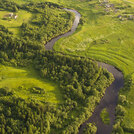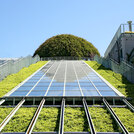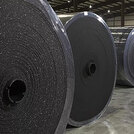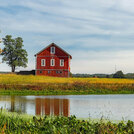i-Tree Eco (originally the Urban Forest Effects or UFORE model) uses detailed field data from complete inventories or randomly sampled plots to quantify urban forest structure, environmental effects, and value to communities. The study area can range from a single tree to a park to an entire county’s urban forest. Eco…
Benefits Toolkit
SOPARNA is a direct observation tool for assessing use of outdoor recreation settings such as wilderness areas and natural open spaces. The tool provides protocols for observers to track users’ physical activity levels, activity types, genders, and estimated age and race/ethnicity groupings during a specified time…
The Automated Geospatial Watershed Assessment (AGWA) tool is a GIS-based multipurpose hydrologic analysis system for use by watershed, water resource, land use, and biological resource managers and scientists in performing watershed- and basin-scale studies. It uses readily available spatial data sets to parameterize…
This broad analysis attempts to place an economic value on the numerous benefits provided by green infrastructure (defined here as a network of decentralized stormwater management practices). The report brings together current research on green infrastructure performance and presents methods for calculating related…
L-THIA estimates changes in recharge, runoff, and nonpoint source pollution resulting from past or proposed development. It estimates long-term average annual runoff for land use and soil combinations, based on community-specific long-term climate data. In the basic model, the only inputs are: location (state and…
This calculator compares the annual energy performance of a building with a green roof to the same building with either a conventional dark roof or a highly-reflective white roof. The results are based on simulations run for new construction (ASHRAE 90.1-2004) apartment or office buildings and use typical weather data…
This tool estimates the greenhouse gas (GHG) emission and energy benefits associated with increasing the recycled content of materials purchased or manufactured. The tool compares baseline recycled content for common materials – including glass, wood, metals, plastics, paper, PVC, and fiberboard – to an alternate…
This Excel-based calculator was developed to help residents of Washington State size and test scenarios for rain water harvesting systems based on the typical climate. The calculator assumes that water is harvested entirely from roofs and that 80% of precipitation falling on roofs is captured. Inputs are the nearest…
The SPAW (Soil-Plant-Air-Water) model simulates the daily hydrologic water budgets of agricultural landscapes with two connected modules, one for farm fields and one for impoundments such as wetland ponds, lagoons or reservoirs. The model was developed to understand and predict agricultural hydrology and its…
This online tool compares predevelopment, conventional development, and development with Green Stormwater BMPs for a single site. Results include changes in total runoff volume, pervious area, and life cycle costs. Inputs include: site size, predevelopment land cover, post development land cover, and parameters for…








